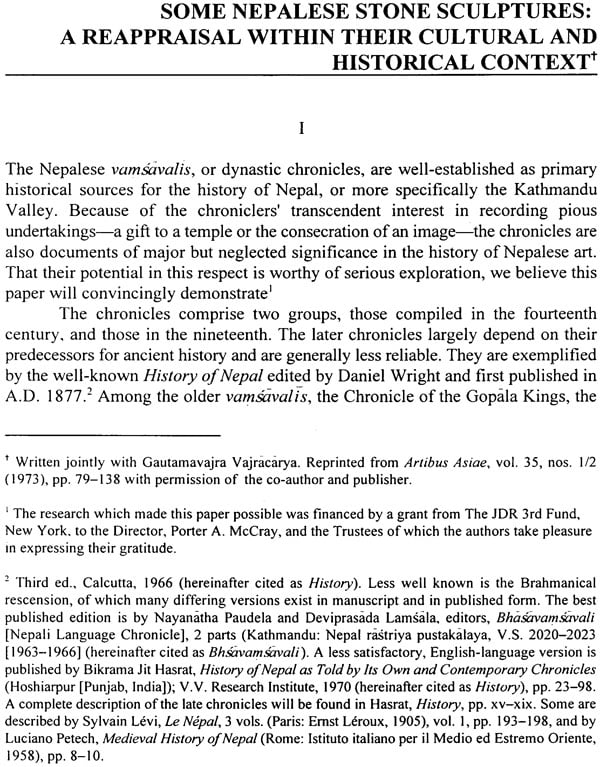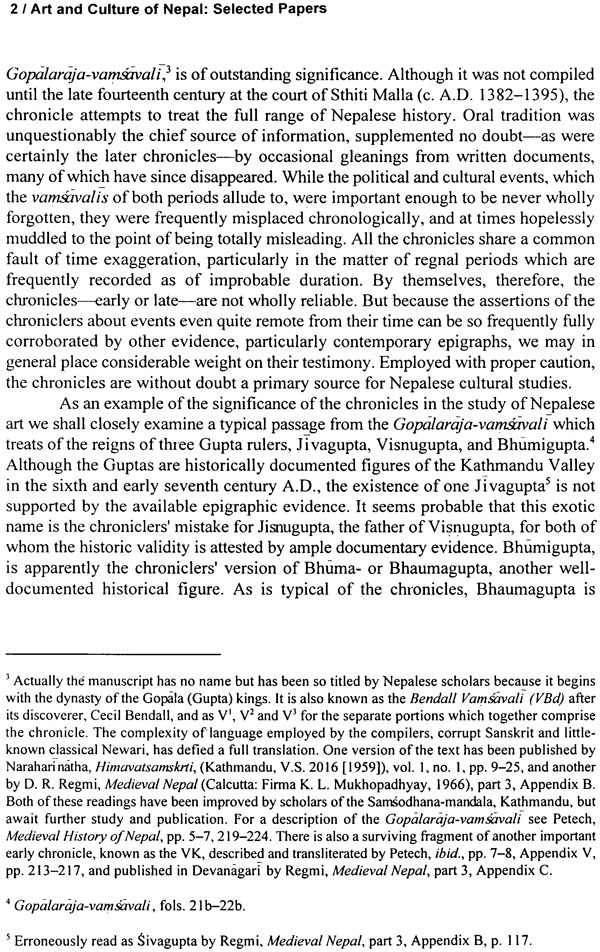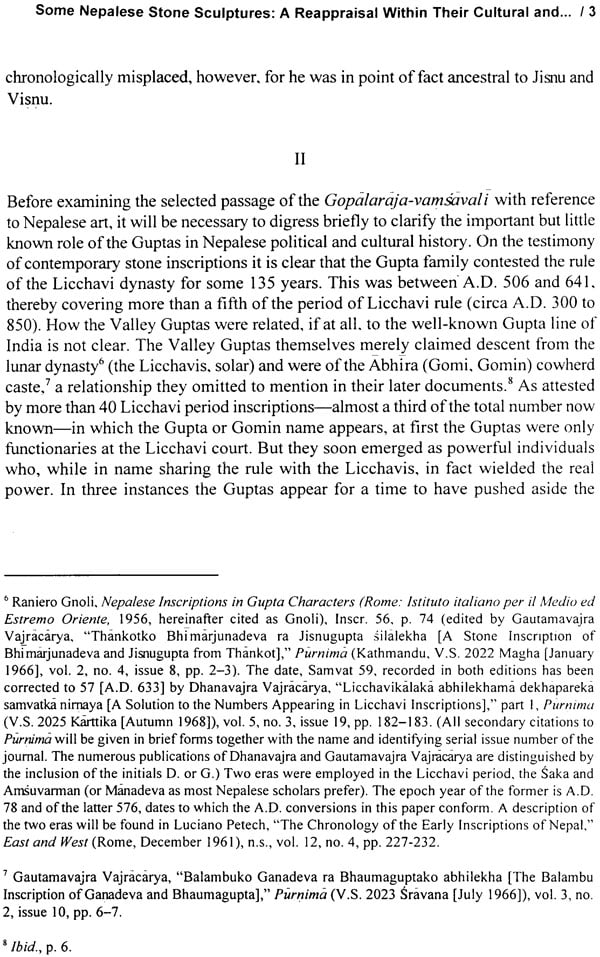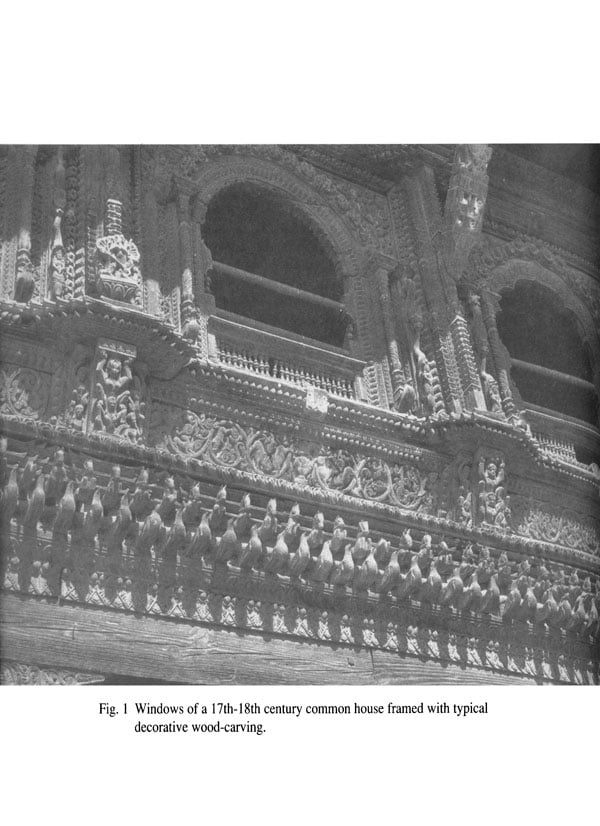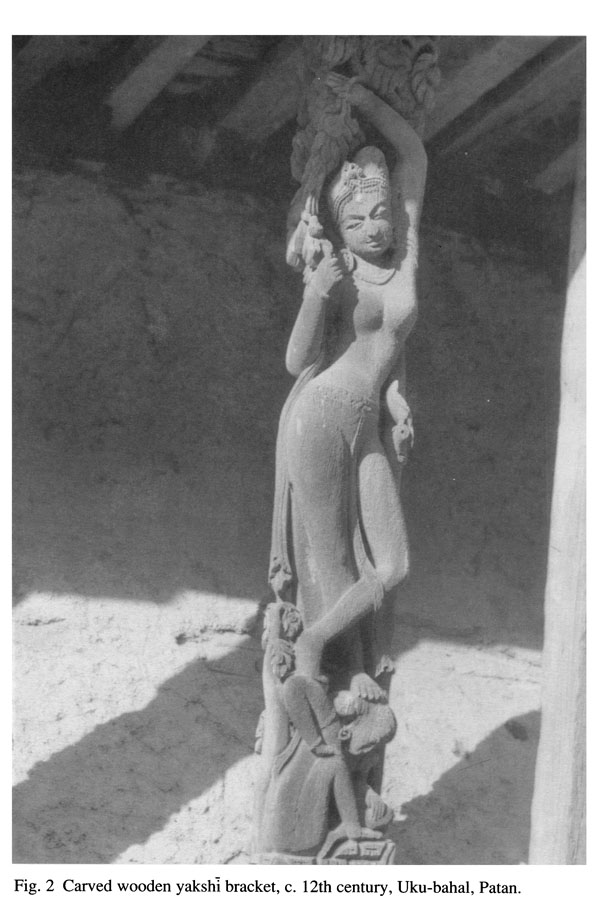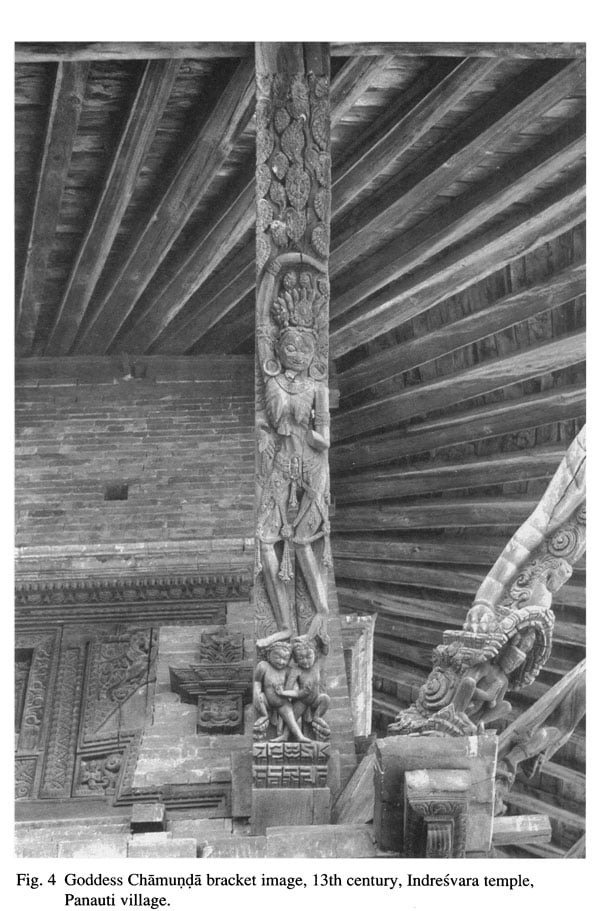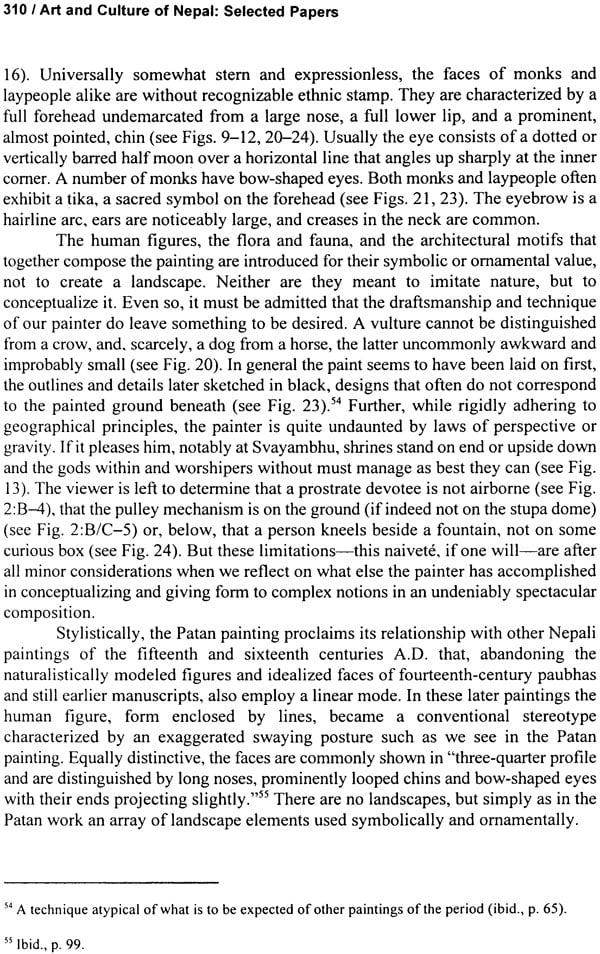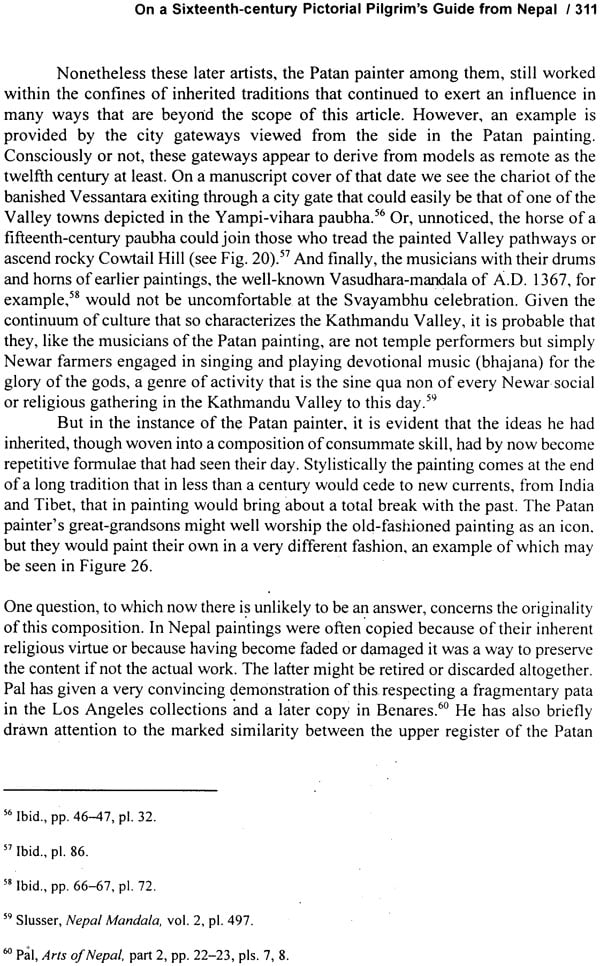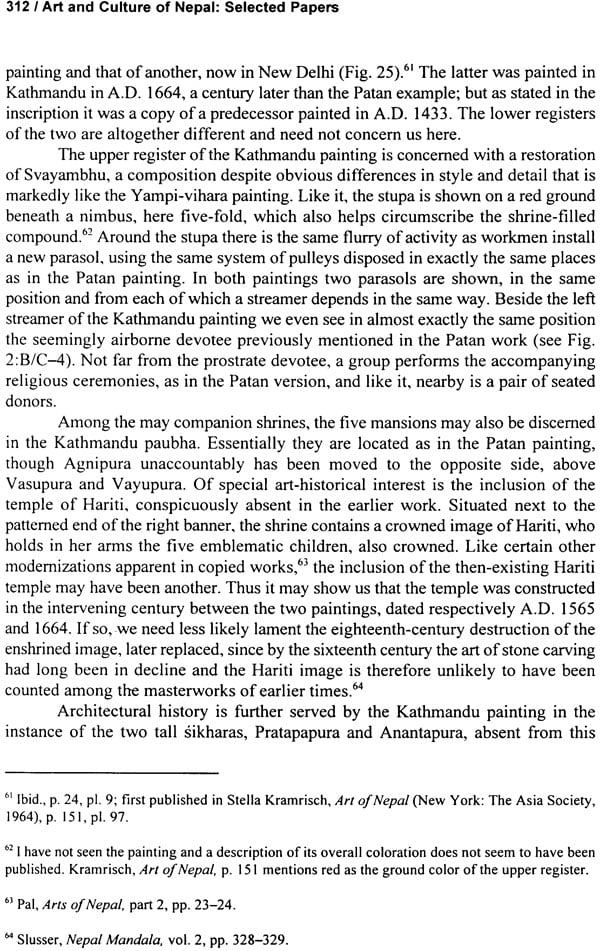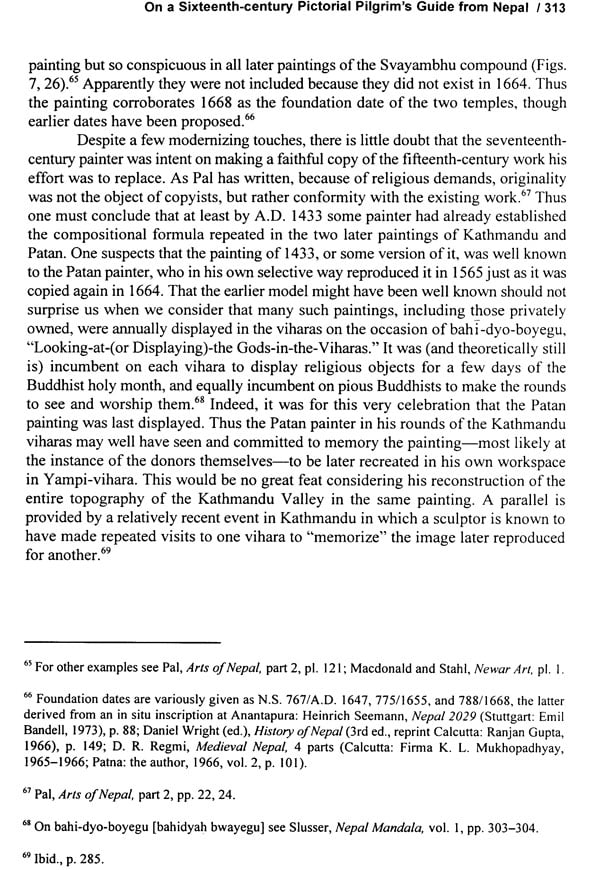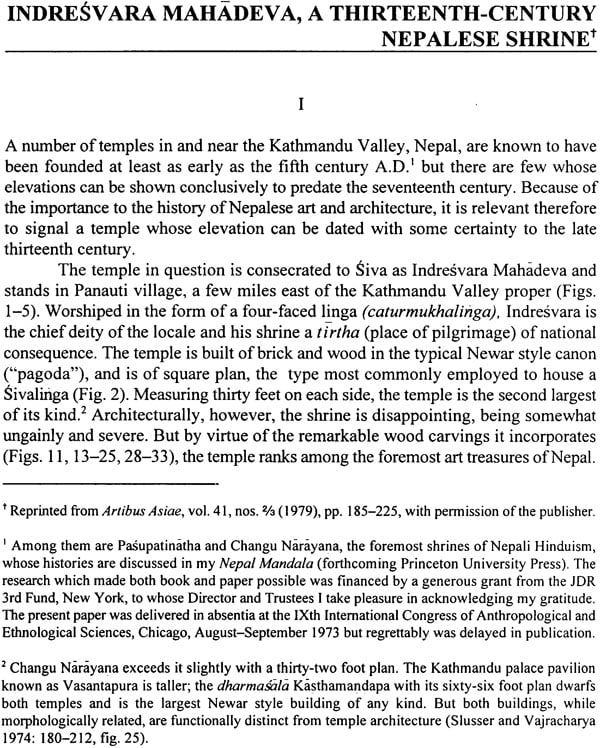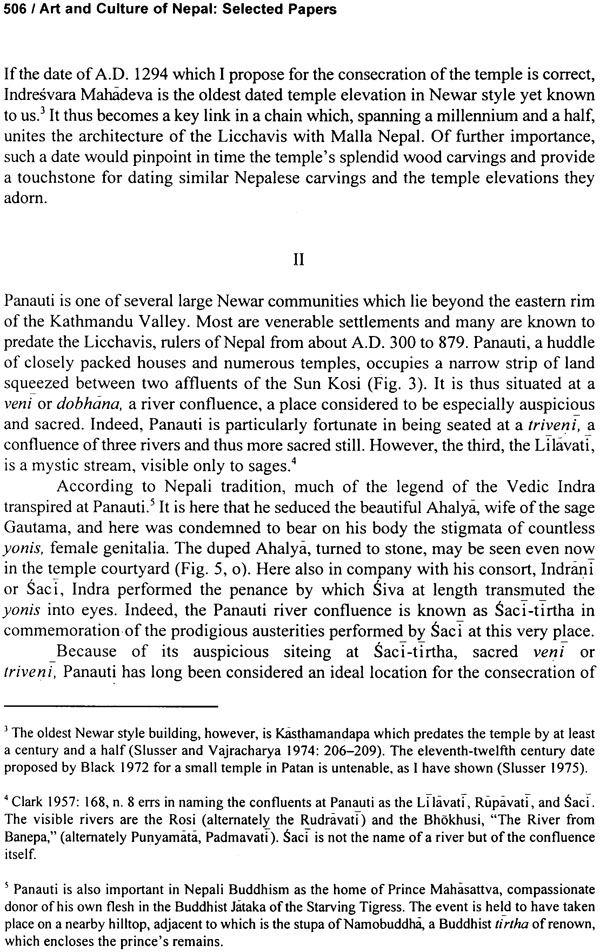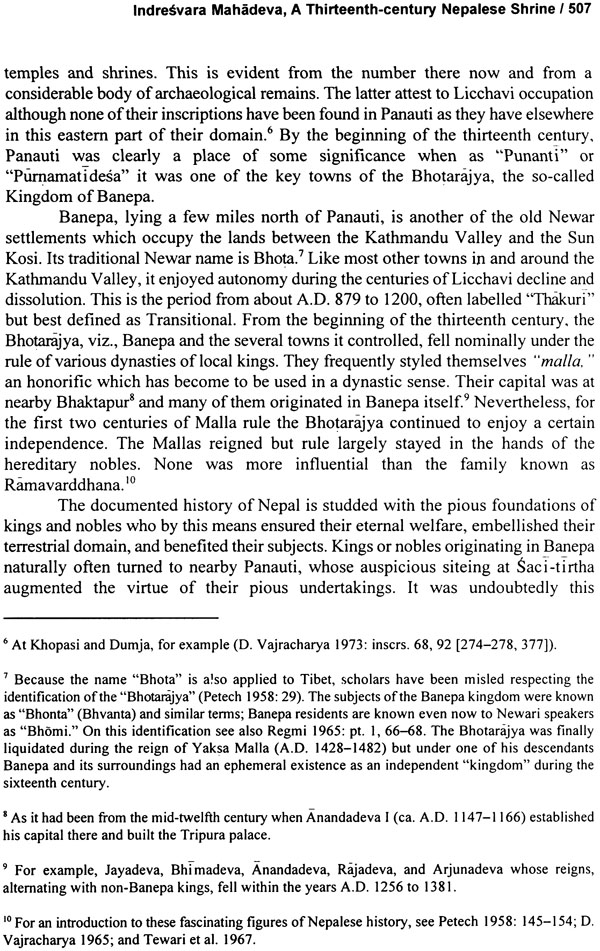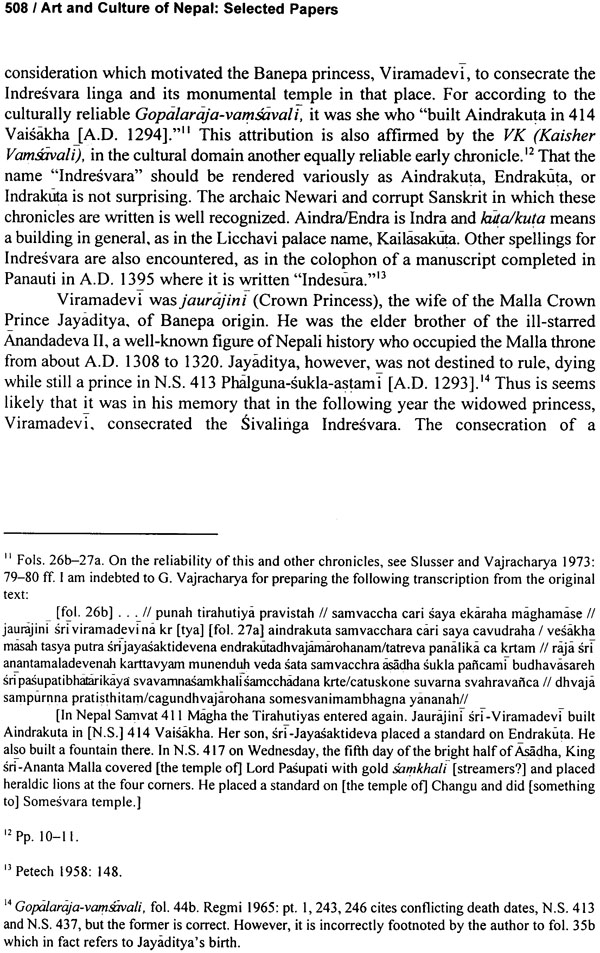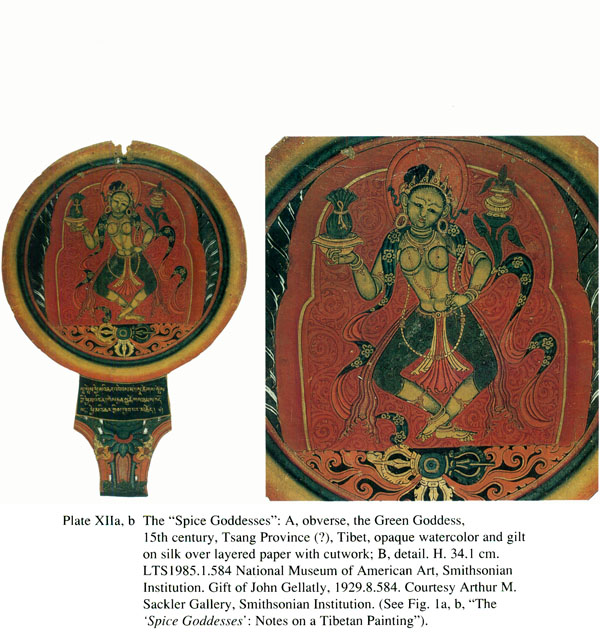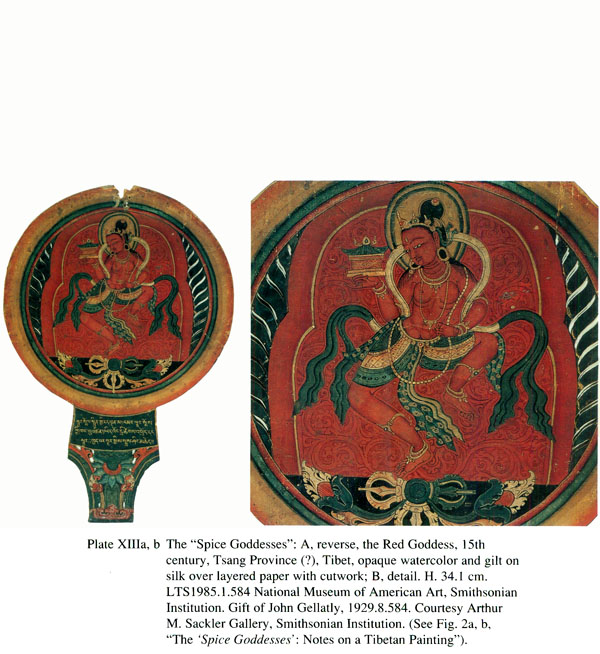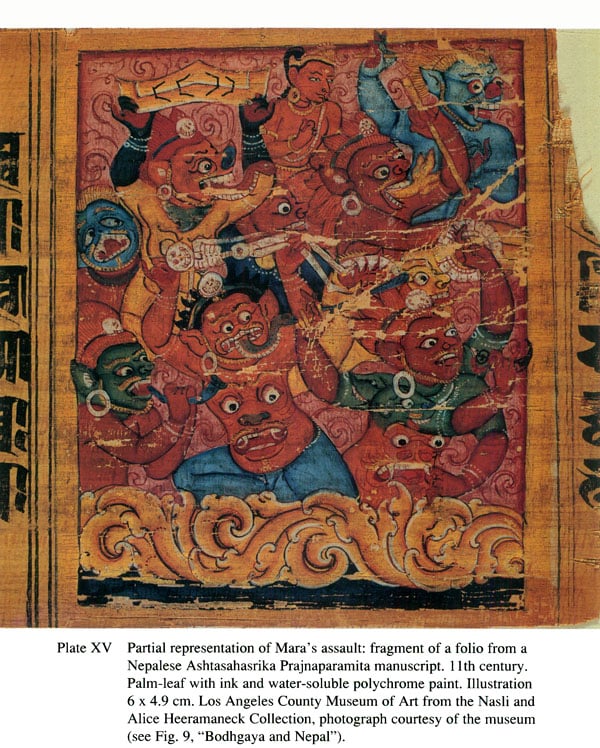
Art and Culture of Nepal: Selected Papers
Book Specification
| Item Code: | NAN190 |
| Author: | Mary Shepherd Slusser |
| Publisher: | Mandala Book Point, Nepal |
| Language: | English |
| Edition: | 2005 |
| ISBN: | 9789994655021 |
| Pages: | 692 (Throughout Color and B/W Illustrations) |
| Cover: | Hardcover |
| Other Details | 11.5 inch X 9.0 inch |
| Weight | 2 kg |
Book Description
This Volume brings together in one convenient format a selection of papers devoted to Nepalese culture published over several years in a variety of places. In one of them, for example, jointly authored and published in Artibus Asiae in 1973, the author make one exciting discovery after another as they unravel various facets of Nepalese history. The so-called "Sleeping Vishnu" at Balaju turns out to be actually part Siva and to be a thousand years older than previously thought. In an astonishing reversal of the accepted relationship, it is shown to actually predate the image of which it was supposed to be a copy.
With few exceptions, the papers have appeared in Western scholarly journals not readily available in Nepal. To make them easily accessible to Nepalese scholars and the interested public they have been brought together in this single volume. The chronological order of publication has been ignored in favour of grouping them under specific headings such as painting, sculpture and architecture. No changes have been made in the original texts but some articles are followed by a short commentary to include new information pertinent to that paper. One commentary, for example, takes into account the critical Jayadeva sculpture whose discovery post dated the planned 1997 publication of this volume. The present work is also fully illustrated with all the photographs included in the original publications.
Mary Shepherd Slusser studied archaeology at Harvard University, art history at the Institute of Fine Arts. New York University, and received a Ph.D. in archaeology and anthropology from Columbia University, New York. When chance brought her to Nepal in 1965, its rich culture captivated her and a subsequent decade of research resulted in Nepal Mandala, a widely acclaimed, two volume, cultural history of the historic Kathmandu Valley. She is also responsible for the content and organization of the exhibition of Nepalese art in the Patan Museum. Currently she is a Research Associate at the Arthur M. Sackler Gallery and Freer Gallery of Art, part of the Smithsonian Institution, Washington, D.C., but regularly visits Nepal and continues to write about its culture.
Manuela Fuller studied Museology and art history at the Sorbonne, Paris. In her role as the wife of a U.S. diplomat, she has lived in India, Pakistan, Bangladesh and Nepal. In all these countries she was active in promoting the local arts and crafts but no country attracted her more than Nepal. This attraction extends to her children, one of whom has recently adopted a beautiful Nepali orphan.
Gautama V. Vajracharya, a native of Kathmandu, travelled abroad on a scholarship to assist Dr. Pratapaditya Pal, chief of the Department of Indian and Southeast Asian Art at the Los Angeles County Museum of Art in California. Later he transferred to the University of Wisconsin at Madison where he earned a Ph.D. in art history and where he now holds a teaching position. He has produced a number of seminal papers on Indian and Nepalese art and culture and is currently readying a book for publication.
It was with reluctance that I agreed to reprint as this book some of the papers I have written over the past thirty years on Nepalese art and culture. I felt that it was immodest-akin, it seemed, to creating one's own Festschrift, an assemblage of essays one's colleagues sometimes compile in tribute. Nepalese colleagues assured me, however, that this was a misguided, personal view that would not occur to others. I hope they are right. Since almost without exception my papers have been published in specialized scholarly journals in the West which rarely reach Nepal, these same colleagues argued that it was incumbent on me-even at this late date-to make them more readily available. The fact that Madhab Maharjan of Mandala Book Point so enthusiastically endorsed their views and urged me forward was also persuasive.
Two recent occurrences-all too typical-seem to justify my colleagues' opinion that the formation in these papers should be more widely available in Nepal. Not long age, giving gone to Budhanilkantha for darshan of Narayana, a young Nepali would-be guide explained to me that I should also see the copy at Balaju. No matter how persuasive my arguments that the image at Balaju was neither a copy or a true Sleeping Vishnu (as demonstrated in a paper written jointly with Gautama Vajracharya a quarter of a century ago), the youngster claimed that he was right because he had "read it in a book." Perhaps in time he may read this book-or other modified because of it-to his own profit and that of the tourists he is so anxious to "guide."
The second occurrence concerns a newspaper quote. Despite 20-years old studies such as my "Nepalese Caityas as Mirrors of Medieval Architecture," which establish the remote origin in time and place of the Nepalese multi-roof architectural style, a correspondent for the Sunday Despatch of May 31, 1997 still wrote that it "is considered Nepal's own native style which began during malla period." If he chances on this volume he and his readers with learn that nothing could be further from the truth.
As I read these papers over in the process of preparing them for reprinting it is evident that certain aspects are out of date. For example, several previously unreported Licchavi period inscriptions with new data have recently come to light, new archaeological investigations have been conducted at Hadigaon, and most noteworthy, there is the spectacular chance find in 1992 of a Kushan-style royal portrait dated A.D. 185. It is a find of paramount significance that may fundamentally affect the dynastic and cultural history of Nepal. There are other developments. Since Writing a 1973 paper, reprinted her, the neglected Makhantol Garuda has been mended and placed on a plinth and the Jalasayana Narayana of Hanuman Dhoka no longer languishes in a foul swamp, both the fortunate recipients of long overdue care. By contrast, however, many of the objects discussed in these papers are no longer to be found in the Kathmandu valley, having succumbed to thievery or neglect. A case in point is the lamentable state of the critical Bhimarjunadeva/Visnugupta inscription (see "Some Nepalese Stone Sculptures: A Reappraisal Within Their Cultural and Historical Context," Fig 3). Now only the top remains barely visible above the refuse-filled pit the ancient Yangal-hiti has become. Soon it will be seen no seen no more. Despite these and many similar changes that time has wrought, some for worse, they are essentially details that do not fundamentally impair the content of these papers which, I believe, can still be read with confidence.
Because the formats- fonts, size, etc. of the selected articles were so diverse scanning was not a viable option for a reprint edition. Thus their assembly has been daunting task requiring computerization and the gathering of all new photographs. Despite the unified formal we have achieved, persons with an eye for copy editing may be dismayed to find inconsistent style throughout this volume. But rather than tamper with the originals we have let stand the style used in the original publication. Thus one finds variable spellings such as, for example, 'color' (the American preference). A Chinese name in one paper may be spelled Wang Hsuan-t' se (the Eade-Giles System of transliteration) and in another Wang Xuance (the currently accepted Priyin). Diacriticals are used in some papers-often capriciously, it appears-but not in other. The style of bibliographic references also varies from paper to paper. Regrettably, for technical constraints, the planned inclusion of a master bibliography, as well as detailed index, has had to be foregone. The exception to tampering with the originals is the addition of some color plates and the use throughout of footnotes (unchanged in content), rather than endnotes. Knowingly, no changes or corrections have been made in the text which is meant to exactly reproduce the original. New material or corrections are confined to a "Comment" appended at the end of article.
The reprinting of these selected papers would not have been possible without the gracious permission of the original publishers and, in the case of photos which are not my own, the permission of institutional and private owners. To all I extend my thanks. Further, probably none of these papers could have been written without the knowledge ained from two young Nepalese scholars, Mahesh Raj Pant and Gautama V. Vajrachrya, during a period of intensive collaboration in the 1960s. Sanskritists and histories then, and stellar members of Samsodhanamandala, an esteemed research circle, each has since earned a doctorate in foreign lands. Thanks are particularly due, and gratefully given, to Dr. Vajracharya and to Manuela Fuller who co-authored some of these papers and have generously permitted them to be reprinted here. I am also grateful to sarah Wike for her diligence and skill in computerizing this diverse and typographically demanding material into a presentable manuscript and to Madhab Maharjan for transmuting it to the readily accessible record that became this book.
While this volume is divided into sections labelled 'sculpture,' 'painting,' and 'architecture,' the papers included are less about art as an aesthetic experience than about are which for the most part plays, or played, an active role within the cultural milieu in which it was produced. That it can be validated by the cultural dimension of historical chronicles, inscriptions, and the living culture is in my opinion what gives Nepalese art its special appeal and why I have spent more than three decades in its study.
Contents
| Preface | v |
| Photograph Credits | ix |
| Part I. Sculpture | |
| Some Nepalese Stone Sculptures: A Reappraisal Within Their Cultural and Historical Context | 1 |
| Some Nepalese Stone Sculptures: Further Notes | 85 |
| Nepali Sculptures-New Discoveries | 91 |
| The Wooden Sculptures of Nepal-Temple Image and Carved Walls | 123 |
| The Saugal-tol Temple of Patan | 147 |
| On the Antiquity of Nepalese Metalcraft | 157 |
| The Purandi Hoard: Metalwork from Eleventh-century Nepal | 183 |
| Part II. Painting | |
| Serpents, Sages, and Sorcerers in Cleveland | 257 |
| On a Sixteenth-century Pictorial Pilgrim's Guide from Nepal | 291 |
| An India-Import Devi Mahisasura-Mardini Scroll from Nepal | 351 |
| A Document on Himalayan Painting | 389 |
| The "Spice Goddesses": Notes on a Tibetan Painting | 405 |
| Part III. Architecture and Minor Arts | |
| Two Medieval Nepalese Buildings: An Architectural and Cultural Study | 429 |
| Indresvara Mahadeva: A Thirteenth-century Nepalese Shrine | 505 |
| Nepalese Caityas as Mirrors of Mediaeval Architecture | 575 |
| Bodhgaya and Nepal | 595 |
| Culture in Microcosm: The Nepalese Inkwell | 627 |
Sample Pages
